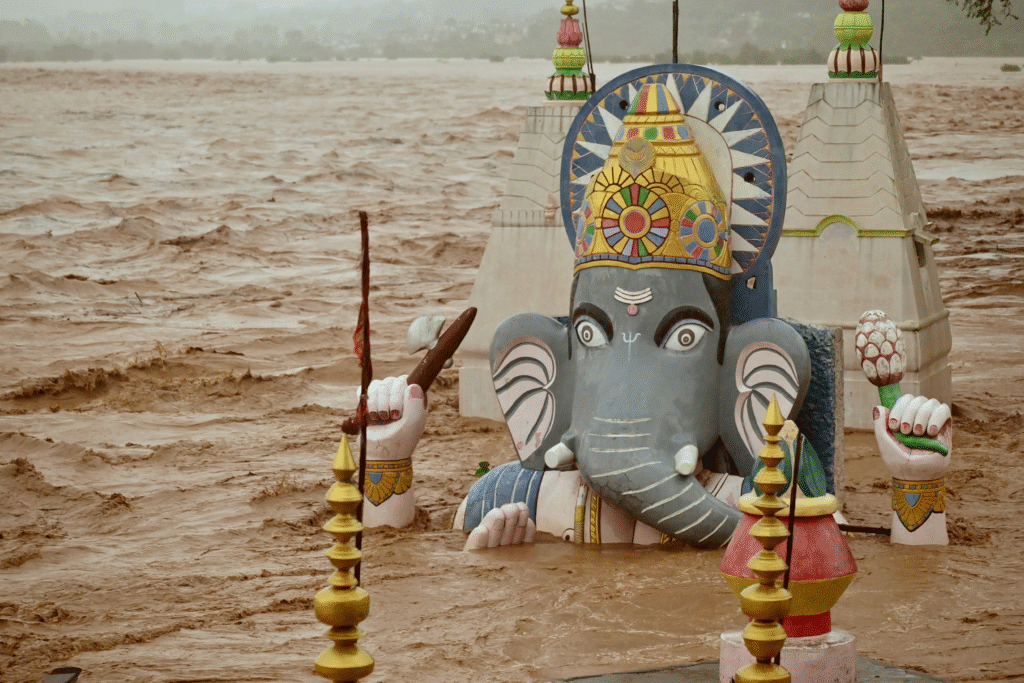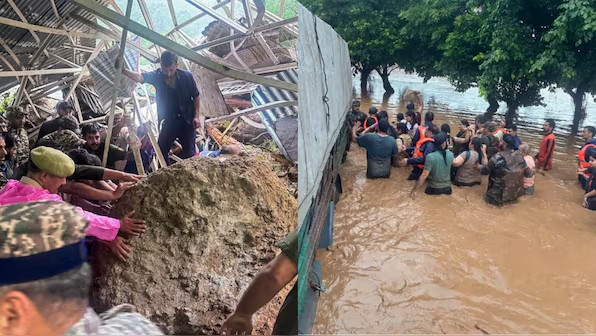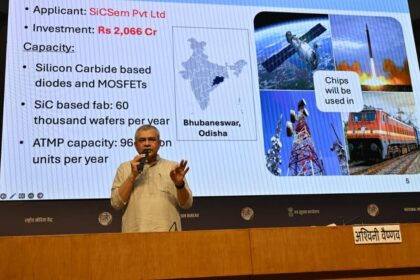Jammu Tragedy: Unprecedented Rain Triggers Floods, 41 Deaths Reported, Vaishno Devi Yatra Safety Under Big Question
Jammu floods after unprecedented rain leave 41 dead, sparking concerns over safety of the Vaishno Devi yatra as rescue ops continue
The Union Territory of Jammu and Kashmir is reeling under the impact of unprecedented rainfall that has triggered floods, landslides, and widespread devastation. In the Jammu region alone, at least 41 people have lost their lives over the past 48 hours, with dozens more injured or missing. The tragedy has also raised urgent questions about the safety of the Vaishno Devi yatra, one of India’s most revered pilgrimages, which sees lakhs of devotees each year.
According to the India Meteorological Department (IMD), Jammu witnessed record-breaking rainfall, the heaviest in decades. Rivers such as the Tawi, Chenab, and Ujh swelled beyond danger levels, inundating nearby villages and sweeping away roads, bridges, and vehicles.
The deluge caused massive landslides in hilly districts like Reasi, Ramban, and Udhampur, cutting off key highways and making rescue operations extremely challenging. Officials described the rainfall as “unprecedented in both intensity and duration,” with several areas recording 300mm+ in less than 24 hours.

Residents in low-lying areas were forced to abandon their homes as floodwaters rose rapidly. Eyewitnesses described terrifying scenes of houses collapsing, cars being washed away, and families desperately trying to cling to trees and rooftops to survive.
By Wednesday evening, the official death toll had climbed to 41, with fears that the number may rise as several people remain unaccounted for. Among the victims were children, elderly citizens, and even members of rescue teams who were caught in sudden landslides.
Reasi district, home to the famous Vaishno Devi shrine, recorded multiple casualties due to flash floods.
In Udhampur, several houses and shops were reduced to rubble.
Jammu city witnessed waist-deep water in several localities, crippling transport and power supply.
Preliminary estimates suggest property losses running into hundreds of crores, though a detailed assessment will take time.
One of the most pressing concerns has been the impact of the floods on the Vaishno Devi yatra, which draws nearly one crore pilgrims annually. Heavy rain caused landslides on the Katra-Bhawan route, forcing authorities to temporarily suspend pilgrim movement.

The Shri Mata Vaishno Devi Shrine Board (SMVDSB) has assured that safety measures are being prioritized and that pilgrims already at the shrine were safely evacuated. However, videos circulating online show devotees struggling amid overflowing streams and slippery pathways, reigniting debates about disaster preparedness.
Experts warn that with climate change intensifying extreme weather events, pilgrimage routes located in fragile Himalayan zones require urgent upgrades in safety infrastructure.
The Jammu and Kashmir administration, along with the National Disaster Response Force (NDRF), the State Disaster Response Force (SDRF), and the Army, has launched large-scale rescue operations.
Over 5,000 people have been shifted to relief camps.
Helicopters were deployed to airlift stranded individuals from remote villages.
Medical teams have been dispatched to flood-hit districts to provide emergency care.
Lieutenant Governor Manoj Sinha expressed grief over the loss of lives, announcing ₹10 lakh ex-gratia compensation for the families of the deceased and ₹50,000 for the injured. He also assured that the Vaishno Devi yatra would only resume once conditions are fully safe.

For survivors, the floods were nothing short of a nightmare. A farmer from Ramban district said:
The water rose so fast that we had no time to gather our belongings. We just ran for our lives.”
A pilgrim from Uttar Pradesh, who was on the way to Vaishno Devi, recounted:
“We were halfway up the trek when landslides blocked the path. It was dark, and people panicked. Thankfully, security forces helped us back to safety.”
Such testimonies highlight the sheer unpredictability and terror caused by the downpour.
Political leaders across India expressed condolences and urged swift action. The Opposition criticized the administration for being “ill-prepared” despite repeated warnings about heavy rainfall.
Congress leader Rahul Gandhi tweeted: “Deeply saddened by the loss of lives in Jammu. The government must ensure safety of pilgrims at Vaishno Devi and strengthen disaster management.”
BJP leaders, on the other hand, defended the administration, pointing out that climate anomalies had overwhelmed even the best-prepared regions globally.
Meteorologists and environmental experts have linked the disaster to the larger climate crisis facing India’s Himalayan states. According to climate scientists, rising global temperatures have led to:
Intensified monsoon bursts.
Unpredictable rainfall patterns.
Increased risk of floods and landslides in fragile zones.
Experts argue that urbanization in ecologically sensitive areas like Jammu’s hills has worsened vulnerability. Construction of hotels, roads, and commercial hubs near pilgrimage routes often ignore environmental safeguards, magnifying the impact of extreme weather.
The incident has once again raised a pressing question: Is the Vaishno Devi yatra safe under extreme weather conditions?
While millions successfully complete the pilgrimage each year, events like these expose weaknesses in infrastructure and disaster response. Pilgrim routes, though improved over the years, remain prone to landslides, flooding, and stampede-like situations.
Experts are now urging the Shrine Board and central government to:
Introduce stricter caps on daily pilgrim numbers during monsoon.
Build all-weather shelters along the trekking route.
Install real-time weather monitoring systems.
Strengthen early warning mechanisms and evacuation drills.
The tragedy has captured national headlines, with people across India offering prayers for the victims and stranded pilgrims. Social media platforms are flooded with hashtags like #JammuFloods, #VaishnoDevi, and #PrayForJammu.
Relief organizations and NGOs have also stepped in, providing food, blankets, and medicines to affected families. Several Bollywood celebrities, including those who regularly visit Vaishno Devi, expressed solidarity and urged fans to donate to relief efforts.







